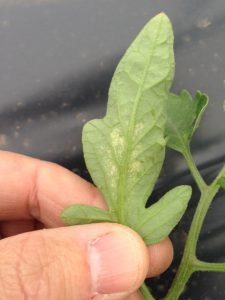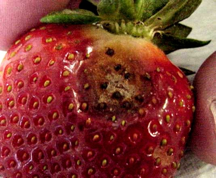Two-spotted spider mite (TSSM) infestations have recently been discovered in high tunnels.
TSSM feeding results in small white pin-spots on the upper leaf surface (see photos). Mites are actually underneath leaves. These pests can increase dramatically in the warm, dry environment of the tunnel.
Check 5 plants each in 5 separate locations in the tunnel. Inspect the entire plant, and be sure to check the underside of leaves that display the whitish mite feeding. If mites are found, it is best to immediately treat. TSSM is much more easily managed, when the problem is addressed at low levels. If allowed to spread throughout the tunnel, TSSM will be much more difficult to control.
See the 2016 Commercial Vegetable Production Recommendations – Pest Management section for materials that are labeled for use in greenhouse structures, including those that are OMRI approved.
[Read more…]



